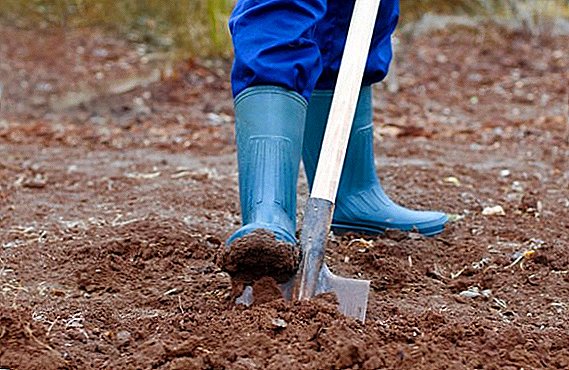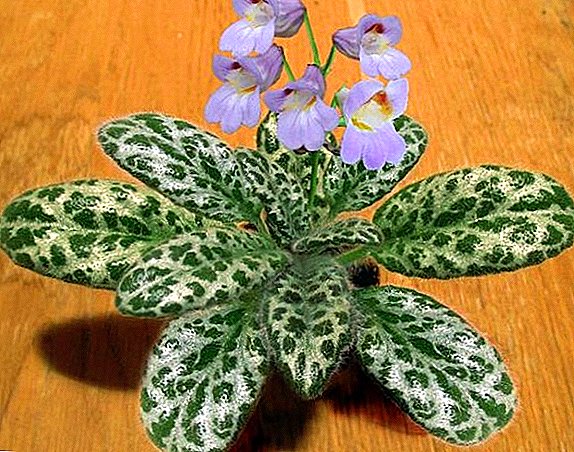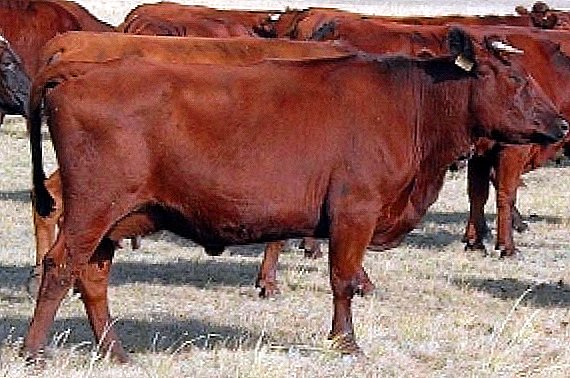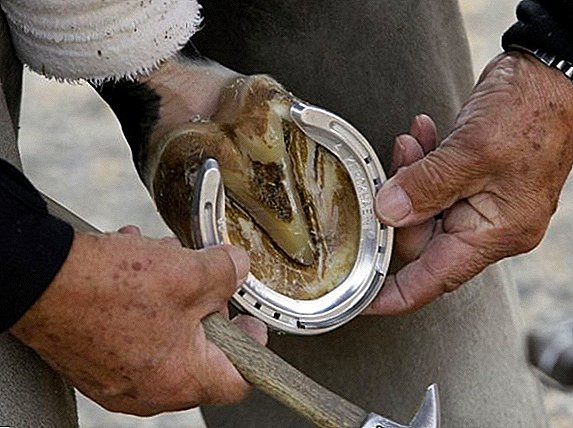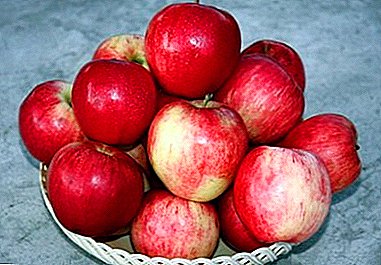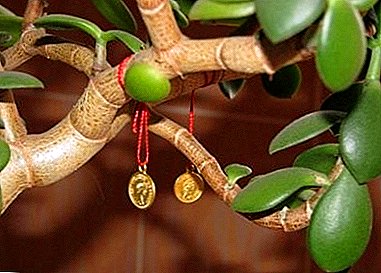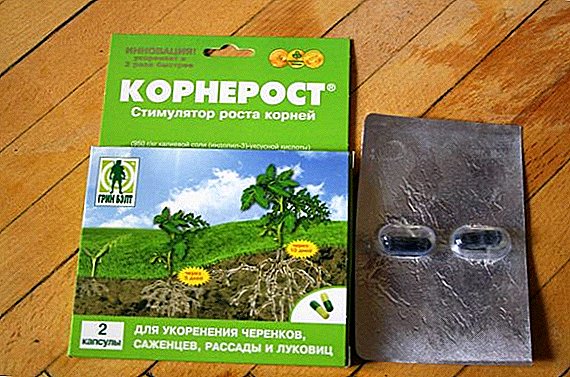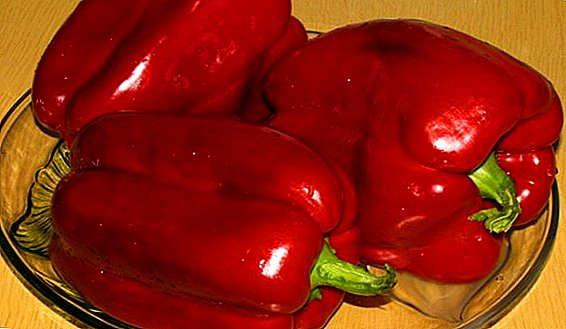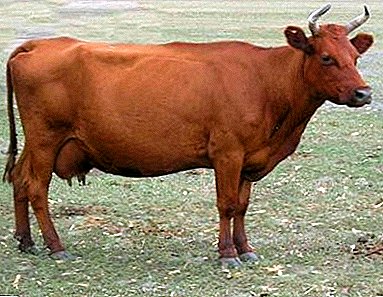
If the specialization of the farm is dairy production, the choice for the maintenance and cultivation of the Red Steppe breed cow is a reasonable and practical solution.
Long, almost 200 years of experience in breeding and zootechnical work with the breed confirms this.
The history of the Red Steppe breed
Homeland breed - southern regions of Ukraine. The creation of this direction of dairy cattle occurred mainly by the absorption and partly reproductive crossing of the local Ukrainian sulfur with the imported Angeln, Ostfryzlyandskoy, Wilstermarch breeds.
Since the 70s of the XIX century. due to the migration processes of the population, the breed of the red German cow resulting from the crossing has spread from steppe Black Sea coast in the Kuban, Stavropol region, Kalmykia, the Volga region, the western regions of Siberia.
In the new natural forage conditions, there was a crossing with zoned breeds of cattle, as a result of which new offspring and breed groups appeared.
Finally developed type of dairy cow proved to be perfectly adapted to the climatic conditions of the steppe and scarce forage resources.
Exterior Features
 The following properties common to the breed are noted.:
The following properties common to the breed are noted.:
- uniform from red-yellow to cherry-red color (but there may be white markings on the udder, head, chest);
- musculature is weak;
- compact body structure length 150 - 165 cm;
- light head;
- deep chest - up to 70 cm, medium in width - 45 - 47 cm;
- top line is flat;
- udder is medium, bowl- or bath-shaped;
- the stomach is voluminous, but not sagging;
- The shape and setting of the limbs is correct.
Specifications
The reproductive ability of cows is good:
- first calving at the age of 28 to 29 months;
- fertility is high;
- calving period about 380 days;
- with a proper and sufficient diet, calves by six months reach 160–170 kg of live weight.
Average body weight an adult animal is 800 - 900 kg for a sire; 450 - 550 kg for a cow. The productivity for the lactation period is about 3.5–4 thousand kg of milk with a fat content of 3.5–3.7%.
Monthly average yield a cow with a lactation period of 305 days ranges from 340 to 400 kg and depends on the age of the animal, the number of calving, the quality of the food supply, and the conditions of detention.
There are also other dairy breeds of cows, such as: Jersey, Simmental, Aishir.
In addition to good milk production indisputable merits rocks are called:
- endurance;
- excellent adaptability to weather and climate factors;
- unpretentiousness to the conditions of detention;
- during periods of summer droughts, cows not only retain weight, but also feed it even on saline pastures.
TO disadvantages Breed can be attributed to:
- frequent cases of mastitis in dairy cows during machine milking due to the frequently encountered irregular structure of the entire udder or its shares;
- injuries of the limbs due to weak muscles when grazing on pastures with high uneven relief;
- weaknesses of the structure: sagging and back problems;
- Some sources attribute to the shortcomings of a small live weight of animals, but one can disagree with this, since it is initially positioned as a dairy breed.
A photo
Photo "Red Steppe" breed cows:





Nutrition and care
High adaptation properties breeds avoid the difficulties and significant material costs associated with the maintenance and care of animals. In the summer, the natural and most biologically valuable source of food is pasture.
Pasture grass has a beneficial effect on the physical condition and productivity of animals. In areas with particularly hot summers, despite the fact that cows of the red steppe breed are well tolerated by high temperatures, it would be nice to arrange shade on pastures.
Important avoid remotes more than 2–2.5 km from the farm of pastures: energy costs per kilometer of the haul are equivalent to the formation of 1 kg of milk.For good lactation, drinking water should be clean, fresh and in sufficient quantity.
Spacious, bright, dry room without drafts with a temperature of 10 - 12 ° C is the best option for keeping cows in the winter.
For daily, except frosty days with temperatures below -15 ° C, walking you need to have a small area. Grooming consists of brushing and washing water on particularly contaminated areas.
As in other breeds, the need for nutrients in red steppe cows depends on the physiological state. In general, the main part of the winter diet is hay.
 But, given the simplicity of animals of this breed in relation to the food supply, a third of the volume can be replaced with straw.
But, given the simplicity of animals of this breed in relation to the food supply, a third of the volume can be replaced with straw.
In the winter period, fodder varieties of root vegetables should become an indispensable part of the diet.
If gourds are added to the main feed, it is better to grind them.
Silage as the only source of food is undesirable: it can cause the birth of weakened calves.
In order to avoid violations of the energy processes in the body and vitamin deficiencies, animals should receive premixes - fillers with the addition of vitamin-mineral components, or multivitamin complexes. Especially important vitamins:
- BUTregulating the work of the respiratory, digestive, urinary;
- D, providing bone mineralization and prevention of rickets in calves;
- Elaunching a number of important metabolic processes.
To compensate for the deficiency of sodium in plant foods, animals should be given salt.
Vaccination and disease prevention
Red steppe cows are especially resistant not only to stressful natural factors, but also to certain diseases, for example, respiratoryas well as to leukemiaresulting in culling and slaughter of sick animals.
Despite the strong constitution and endurance of these cows, vaccination against other major diseases of cattle is mandatory:
- foot and mouth disease;
- emkar;
- anthrax.
Preventive actions against ticks and gadfly larvae are carried out depending on the situation: the appearance of capsules with gadfly larvae on the back of animals, the presence of ticks on pastures.
Against the pulmonary and gastrointestinal parasites, the treatment of cows is carried out seasonallyand also as needed.
Prospects for breeding
 Naturally, the desire to improve the productive performance of any breed. Breeders for the red steppe while maintaining its high adaptive properties and endurance identified the main improving breeds:
Naturally, the desire to improve the productive performance of any breed. Breeders for the red steppe while maintaining its high adaptive properties and endurance identified the main improving breeds:
- red-speckled Holstein;
- angler's;
- red danish
The goal was to keep:
- high milk fat and good anglers;
- abundant milkiness and the possibility of long use from red Danish cattle;
- better quality of the udder, greater live weight and the possibility of high yields from golshtinok
High acclimatization ability of the breed should be considered primarily as a positive factor for livestock work in regions with a hot, arid climate.
Unpretentiousness to the conditions of detention does not mean poverty and imbalance of the diet in this case. Proper maintenance of animals, their good responsiveness to improved feeding will ensure a high payment of feed received milk and decent quality dairy products.
- Breeding cows.
- How to start breeding cows for meat as a business?
- The hardy and unpretentious breed of cows come from England - "Hereford".


